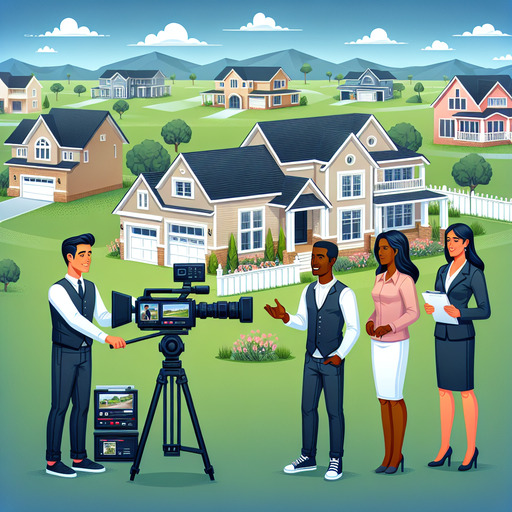
-
Table of Contents
Unlock the secrets to capturing the best angles in real estate video tours and elevate your property listings today! Learn More
Introduction
Real estate video tours have become an essential tool for showcasing properties in the digital age, offering potential buyers a dynamic and immersive experience. Capturing the best angles in these tours is crucial to highlight the property’s features, create a sense of space, and evoke an emotional connection with viewers. Effective video tours can significantly enhance a property’s appeal, making it stand out in a competitive market. This guide will explore key techniques and tips for capturing the most flattering and engaging angles, ensuring that each property is presented in its best light. From understanding the importance of lighting and composition to utilizing the right equipment and post-production techniques, mastering these elements can transform a simple video tour into a powerful marketing asset.
Real Estate Video Tours: How to Capture the Best Angles
In the competitive world of real estate, video tours have emerged as a powerful tool to attract potential buyers and renters. Capturing the best angles in these video tours is crucial to showcasing properties in their most appealing light. To achieve this, it is essential to understand the principles of composition, lighting, and movement, as well as the technical aspects of video production.
First and foremost, composition plays a pivotal role in creating visually engaging video tours. The rule of thirds is a fundamental guideline that can help in framing shots effectively. By dividing the frame into nine equal parts using two horizontal and two vertical lines, and placing key elements along these lines or at their intersections, you can create balanced and aesthetically pleasing images. This technique draws the viewer’s eye naturally to the most important parts of the scene, whether it be a spacious living room, a modern kitchen, or a luxurious master bedroom.
In addition to composition, lighting is another critical factor in capturing the best angles. Natural light is often the most flattering, so filming during the day when sunlight is abundant can enhance the overall appearance of the property. However, it is important to avoid shooting directly into the sun, as this can create harsh shadows and overexposed areas. Instead, position the camera so that the light source is behind or to the side of the camera, illuminating the space evenly. When natural light is insufficient, artificial lighting can be used to fill in shadows and highlight key features. Soft, diffused lighting is preferable to avoid creating harsh contrasts and to maintain a warm, inviting atmosphere.
Movement within the video tour should be smooth and deliberate to provide a seamless viewing experience. Using a stabilizer or gimbal can help achieve steady shots, preventing the distracting shakiness that can occur with handheld filming. Slow, steady movements, such as panning from one side of a room to the other or tilting up to reveal high ceilings, can help convey the scale and layout of the property. Additionally, incorporating a mix of wide shots, medium shots, and close-ups can provide a comprehensive view of the space, highlighting both the overall flow and the finer details.
Technical considerations, such as camera settings and editing, also play a significant role in producing high-quality video tours. Ensuring that the camera is set to the appropriate resolution and frame rate is essential for capturing clear, smooth footage. A resolution of at least 1080p and a frame rate of 30 frames per second are generally recommended for real estate videos. During the editing process, it is important to maintain a consistent color balance and exposure throughout the video. Color grading can be used to enhance the visual appeal, but it should be done subtly to avoid creating an unnatural look.
In conclusion, capturing the best angles in real estate video tours requires a combination of thoughtful composition, effective lighting, smooth movement, and careful technical execution. By paying attention to these elements, real estate professionals can create compelling video tours that highlight the unique features of each property, ultimately attracting more potential buyers and renters. As the real estate market continues to evolve, mastering the art of video tours will remain an invaluable skill for showcasing properties in the most engaging and effective way possible.
Q&A
**Question:** How can I capture the best angles for a real estate video tour?
**Answer:** To capture the best angles for a real estate video tour, use a wide-angle lens to showcase the full scope of each room, shoot from the corners to maximize depth, maintain a steady camera with a gimbal or tripod, ensure good lighting by utilizing natural light and additional sources if needed, and highlight key features by focusing on unique architectural details and amenities.